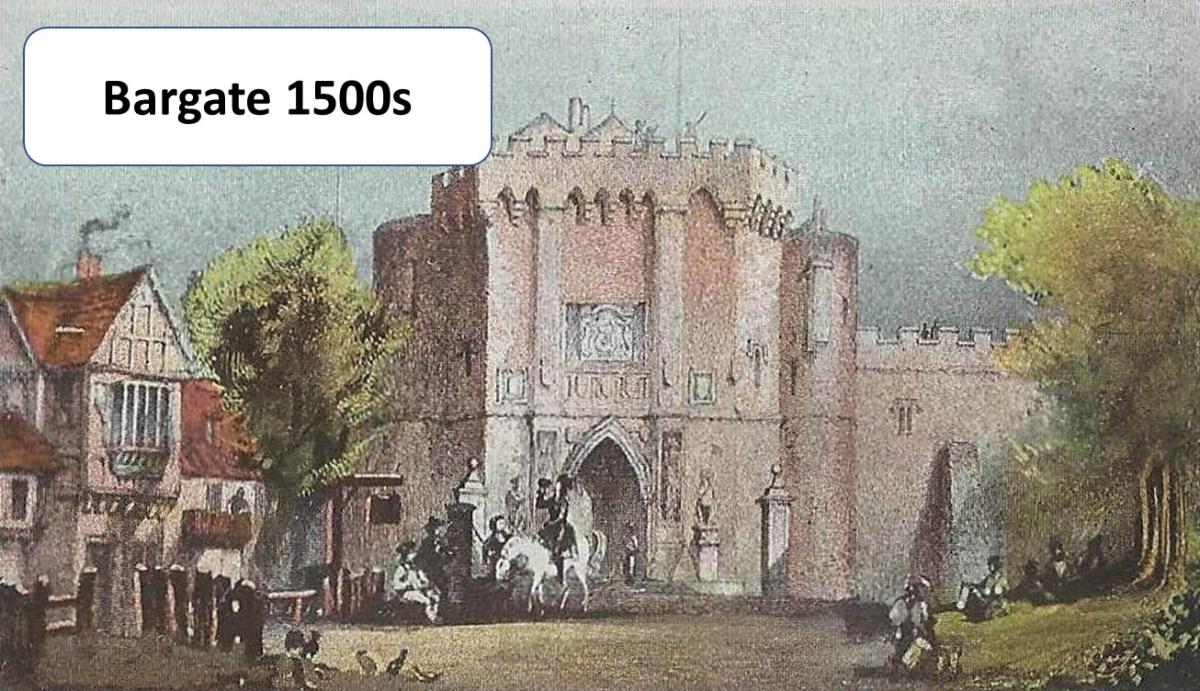In 1908, a “History of the County of Hampshire” stated that: “the medieval town had 29 towers and 8 gates”.
It continues: “four gates remain. These are the Bargate, God's House Gate, West Gate, and the postern (for pedestrians only) called Blue Anchor Gate. Those which have disappeared are the East Gate, Biddles' Gate, and the Water Gate. In addition there was a Castle Water Gate, discovered in 1887, and another postern near the Friary, the site of which is lost”.
Rather oddly, that adds up to nine gates, not eight! There may have been even more over the years, created to improve access, but later blocked up to improve the Town defences.
Don't miss out: Get our weekly heritage and nostalgia newsletter >>>
The North Gate, the Bargate, still stands proudly at the north entrance to the Old Town. It was a well-protected building, with arrow loops and gun ports. We are lucky to still have it – it was almost sold to Americans in the early 1900s, but was then bypassed by roads on either side. Nikolaus Pevsner, the respected architectural historian, wrote “The Bargate is probably the finest, and certainly the most complex, town gateway in Britain”. We are looking forward to seeing the ancient Guildhall above, and the roof, open again following repairs.
The West Gate is also in good condition - it was the chief entrance to West Quay, the main quay in medieval times. It was therefore the Gate through which soldiers passed for many years, to get on ships, and head for battles. Fortunately, because it became redundant as a main route when the Western Esplanade was built, it did not require demolition to help the traffic flow. It now holds an exhibition on the Mayflower, staffed by volunteers, which is open most Sundays from 11am to 3pm, free entrance.
The Water or South Gate, at the south end of the High Street, was substantial, reinforced to withstand attacks from the water. It was demolished in 1804 because it obstructed commercial vehicles’ access to Town Quay. However the western tower remains, and after being hidden for many years behind Hotels and other premises, it is now visible again.

The East Gate disappeared completely in 1775 – it proved too much of an interruption to movement between the Town Centre and the suburbs to the east. It would be good to commemorate it in some way, and then all four “cardinal” Gates would be marked.
There is one “ordinal” Gate, the South-East Gate – God’s House Gate. It survived because after land was reclaimed to the south, the main road ran outside the walls, and traffic was not blocked by the Gate.

A Friary was a short distance north of God’s House Gate - the Friars had their own Gate which gave them access to their farmlands, outside the town’s East Walls. They built a bridge over the moat, and swore an oath that they would burn the bridge, and defend the Gate, if there was an attack.
In the west walls was the Castle Watergate, which can still be seen. This was reserved exclusively for goods and passengers for the Castle, and to bring in wine, to make sure the barrels were counted and taxed.

Postern Gates were small gates for pedestrians only. Biddlesgate was at the end of Simnel Street in the West Walls, where a few remnants remain on the south side. Blue Anchor Postern, now just an arch, gave access to the original West Quay. There may also have been a Postern in the north-east part of the walls, where there is now an arched entrance.
However, one gate that was not medieval was York Gate. In the North Wall, east of the Bargate, it was only created in the eighteenth century. It was demolished in the 1960s, but the gap in the walls remains, and will become navigable once again, when the Bargate Development is completed.

Jack Wilson is a tour guide with SeeSouthampton.co.uk



















Comments: Our rules
We want our comments to be a lively and valuable part of our community - a place where readers can debate and engage with the most important local issues. The ability to comment on our stories is a privilege, not a right, however, and that privilege may be withdrawn if it is abused or misused.
Please report any comments that break our rules.
Read the rules here